| Listing 1 - 10 of 176 | << page >> |
Sort by
|
Book
ISBN: 9782200255879 220025587X Year: 2016 Publisher: Paris: Armand Colin,
Abstract | Keywords | Export | Availability | Bookmark
 Loading...
Loading...Choose an application
- Reference Manager
- EndNote
- RefWorks (Direct export to RefWorks)
Forgée au début du XXe siècle et initialement liée aux intérêts britanniques dans le golfe Persique et au voisinage de l'Inde, l'expression "Moyen-Orient" a des définitions fluctuantes. Ce livre traite d'un espace allant de l'Egypte à l'Iran et de la mer Noire à l'océan Indien, et inclut occasionnellement le Maghreb. Il souligne l'unité de la région, qui tient à l'héritage des Empires ottoman et qâjâr et à l'ancienneté de la présence de l'islam. Son ambition est double : sortir des études sectorielles par aire linguistique ou Etat pour étudier le Moyen-Orient comme un ensemble ; dans un cadre chronologique dicté par la politique et les relations internationales, faire vivre les populations sur les plans culturel, religieux, social et économique.
Moyen-Orient --- Middle East --- History --- MIDDLE EAST--HISTORY --- Histoire --- Middle East - History
Book
ISBN: 2226088881 9782226088888 Year: 1997 Publisher: Paris: Albin Michel,
Abstract | Keywords | Export | Availability | Bookmark
 Loading...
Loading...Choose an application
- Reference Manager
- EndNote
- RefWorks (Direct export to RefWorks)
Middle East --- Moyen-Orient --- History --- Histoire --- Middle East - History
Book
ISBN: 9782021420241 2021420248 Year: 2021 Publisher: Paris: Seuil,
Abstract | Keywords | Export | Availability | Bookmark
 Loading...
Loading...Choose an application
- Reference Manager
- EndNote
- RefWorks (Direct export to RefWorks)
"Berceau des trois monothéismes, terre de conflits confessionnels et d'obsessions identitaires, le Moyen-Orient tend à déchaîner les passions, quand il ne suscite pas la résignation devant la répétition du malheur. Pour désamorcer une telle charge symbolique, Jean-Pierre Filiu adopte une démarche résolument laïque, éclairant d'un jour nouveau un millénaire et demi d'histoire de la région, à partir de la fondation, en 395, de l'Empire romain d'Orient. Son approche citoyenne et érudite invalide les amalgames contemporains qui ne font que projeter sur la réalité moyen-orientale les propagandes de guerre des uns et des autres. Elle éclaire le cynisme avec lequel dictateurs et jihadistes défigurent le passé pour légitimer leur barbarie. Une telle histoire devient alors bien plus riche et fascinante que les caricatures dans l'air du temps. Ce livre, qui fera date, offre la première synthèse sur une aussi longue durée de l'histoire de ce "milieu des mondes", carrefour de trois continents. Il s'appuie sur un solide appareil didactique, avec vingt cartes, dix chronologies et deux index. Il vise ainsi à rendre directement accessibles l'héritage et les enjeux du Moyen-Orient. Il se conclut par une analyse de la place et des ambitions de la France dans cette région. Car cette histoire est également la nôtre, aujourd'hui peut-être plus que jamais."
Middle East --- History --- History. --- Middle East - History --- Moyen-Orient --- Histoire.
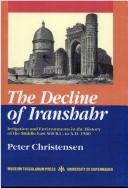
ISBN: 8772892595 9788772892597 Year: 1993 Publisher: Copenhagen: Museum Tusculanum Press,
Abstract | Keywords | Export | Availability | Bookmark
 Loading...
Loading...Choose an application
- Reference Manager
- EndNote
- RefWorks (Direct export to RefWorks)
Irrigation --- Ecology --- Environnement --- History. --- Histoire --- Middle East --- Moyen-Orient --- History --- Environmental conditions --- Irrigation - Middle East - History.
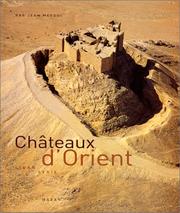
ISBN: 9782850257889 2850257885 Year: 2001 Publisher: Paris: Hazan,
Abstract | Keywords | Export | Availability | Bookmark
 Loading...
Loading...Choose an application
- Reference Manager
- EndNote
- RefWorks (Direct export to RefWorks)
Castles --- Architecture, Medieval --- Châteaux --- Architecture médiévale --- Fortification --- Crusades. --- Archéologie --- Architecture islamique --- Architecture militaire --- Château --- Histoire --- Palais --- History --- Egypte --- Turquie --- Châteaux --- Architecture médiévale --- Fortification - Middle East - History - To 1500. --- Castles - Middle East - History - To 1500.
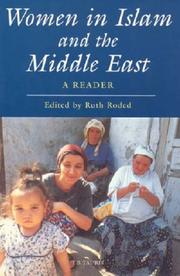
ISBN: 9781845113858 1845113853 Year: 2008 Publisher: London: Tauris Academis Studies,
Abstract | Keywords | Export | Availability | Bookmark
 Loading...
Loading...Choose an application
- Reference Manager
- EndNote
- RefWorks (Direct export to RefWorks)
Muslim women --- Women in Islam --- History --- Littérature islamique --- Littérature islamique --- Islamic women --- Women, Muslim --- History. --- Islamic literature --- Musulmanes --- History and criticism. --- Histoire --- Histoire et critique --- Islam --- Women --- Muslim women - Middle East - History --- Women in Islam - Middle East - History --- Muslimahs
Book
ISBN: 3030257088 303025707X Year: 2019 Publisher: Cham : Springer International Publishing : Imprint: Springer,
Abstract | Keywords | Export | Availability | Bookmark
 Loading...
Loading...Choose an application
- Reference Manager
- EndNote
- RefWorks (Direct export to RefWorks)
This book highlights fundamental, but often neglected, issues important for a better understanding of present-day Iran. It underlines the idea that the most effective means for a nation to meet challenges and practices of the modern era lies with the fundamental values and norms that resonate with its inhabitants. This book is meant to be a companion to the author’s published book Iran Revisited: Exploring the Historical Roots of Culture, Economics, and Society that expands upon that book’s ideas, without repeating its theoretical reasoning. Its goal is to offer a better understanding of the current and evolving situations in Iran. In this regard, the author tried to clarify his position through a host of suggestions, most notably, the need to consider social rights as the bare minimum but extremely imperative criteria in our contemporary discourse for the betterment of our society. These rights, he argues, are the most fundamental tenets of any community that strives to succeed and flourish. In this context, the underlying discussion rests on the following claim: the most persisting problems in Iran are the outcomes of the gradual regression of the people’ mindset that persistently overlooked their heritage and value system in favor of imitating ideas that were/are neither compatible with their culture and history, nor applicable to the country’s socioeconomic conditions. The author, therefore, presumed that these predicaments are self-inflicted: they were neither caused by a specific state, nor belong to a historical period, or individual(s); they cannot be characterized by political or economic terminologies, but are firmly rooted in people inability to recognize that the most vital principle in developing and propelling a nation forward is the existence of a unified people. .
Iran --- Social life and customs. --- Middle East—Economic conditions. --- Middle East-Politics and governm. --- Middle East-History. --- Middle Eastern and North African Economics. --- Middle Eastern Politics. --- History of the Middle East. --- Middle East—Politics and government. --- Middle East—History.
Book
ISBN: 9780823278169 9780823278169 0823278166 0823278182 0823280586 Year: 2018 Publisher: New York: Fordham university press,
Abstract | Keywords | Export | Availability | Bookmark
 Loading...
Loading...Choose an application
- Reference Manager
- EndNote
- RefWorks (Direct export to RefWorks)
"A collection of essays devoted to the culture of the Francophone European crusading states of the eastern Mediterranean. Contributors, including historians of the crusades, Old French literature, and medieval art, each address different themes and questions related to life, literature, and language in the Frankish Levant"--
French language --- French --- History --- Français (langue) --- Croisades --- Crusades --- 1re croisade (1096-1099) --- Histoire. --- History. --- French language - Middle French, 1300-1600 --- French language - Middle East - History --- French - Middle East - History
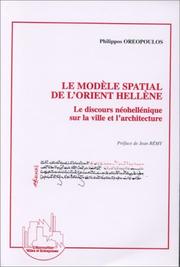
ISBN: 2738469736 9782738469731 Year: 1998 Volume: *8 Publisher: Paris: L'Harmattan,
Abstract | Keywords | Export | Availability | Bookmark
 Loading...
Loading...Choose an application
- Reference Manager
- EndNote
- RefWorks (Direct export to RefWorks)
Architecture [Byzantine ] --- Architecture byzantine --- Architectuur [Byzantijnse ] --- Cities and towns --- Architecture --- Villes --- History --- Histoire --- Communication in architecture --- Communication in city planning --- City planning --- Architecture [Greek ] --- Influence --- Greece --- Communication in architecture - Middle East - History --- Communication in architecture - Balkan Peninsula - History --- Communication in city planning - Middle East - History --- Communication in city planning - Balkan Peninsula - History --- Architecture - Middle East - History - Sources --- Architecture - Balkan Peninsula - History - Sources --- City planning - Middle East - History - Sources --- City planning - Balkan Peninsula - History - Sources
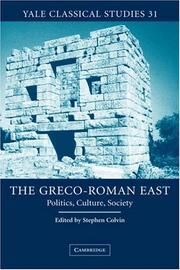
ISBN: 0521828759 9780521828758 9780521035583 Year: 2004 Volume: 31 Publisher: Cambridge: Cambridge university press,
Abstract | Keywords | Export | Availability | Bookmark
 Loading...
Loading...Choose an application
- Reference Manager
- EndNote
- RefWorks (Direct export to RefWorks)
Focusing on the Eastern Mediterranean world in the Hellenistic and Roman periods, this collection of essays draws on new discoveries in archaeology and epigraphy. It illustrates how methods and interpretations have developed over the last two decades. The essays cover a wide range of social and historical issues, including processes of Hellenization and acculturation, the permeability and flexibility of political boundaries, the interaction of civil and religious authority, and the operation of networks of patronage and power.
Middle East --- Moyen-Orient --- History --- Histoire --- Grèce --- Rome --- Royaumes hellénistiques --- Relations --- Arab countries --- To 622 --- Middle East - History - To 622.
| Listing 1 - 10 of 176 | << page >> |
Sort by
|

 Search
Search Feedback
Feedback About UniCat
About UniCat  Help
Help News
News